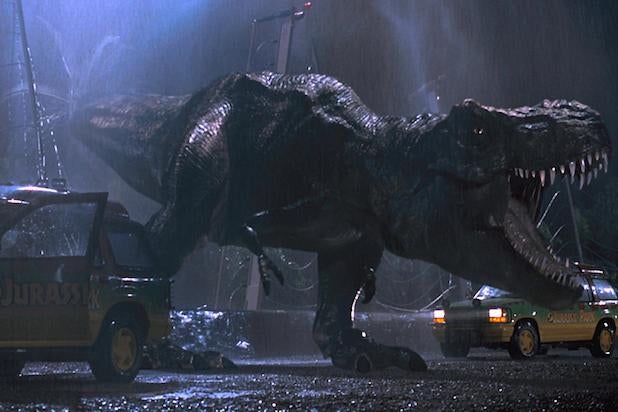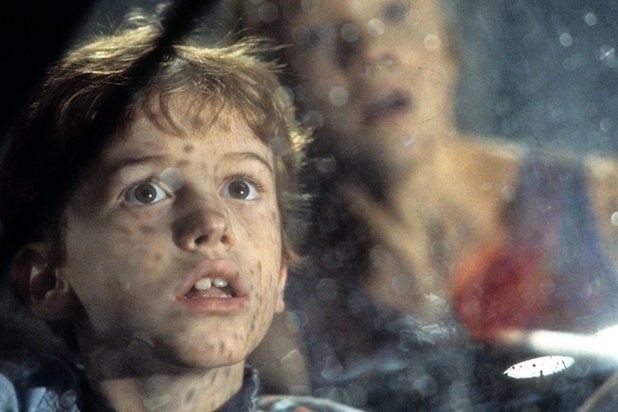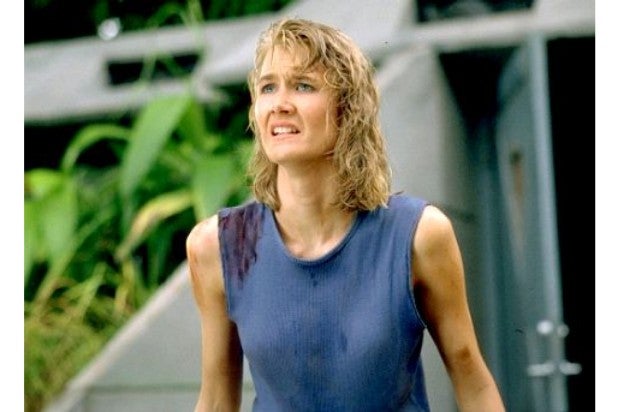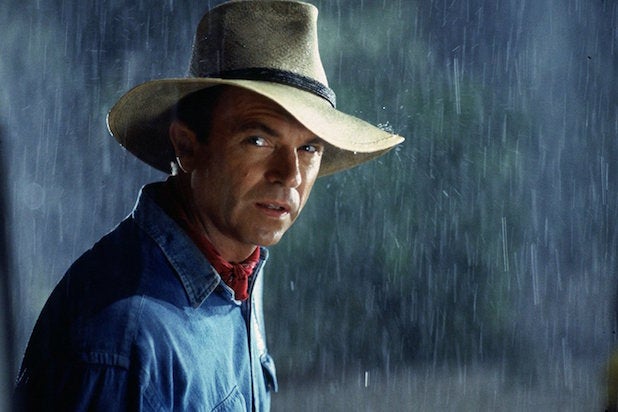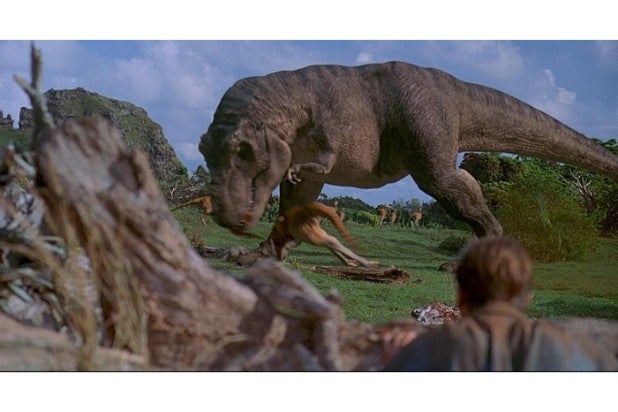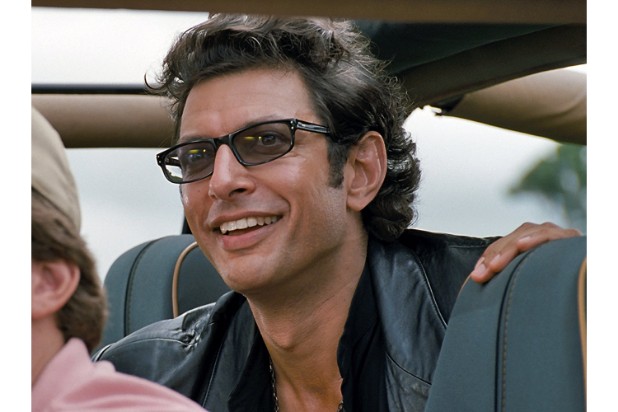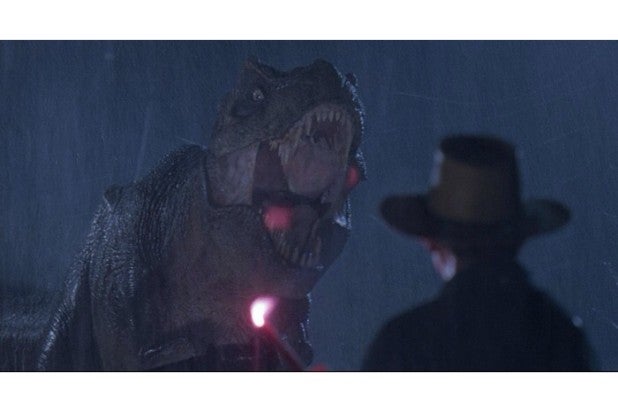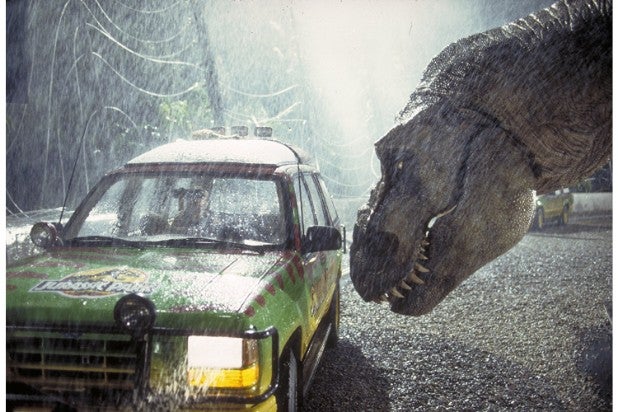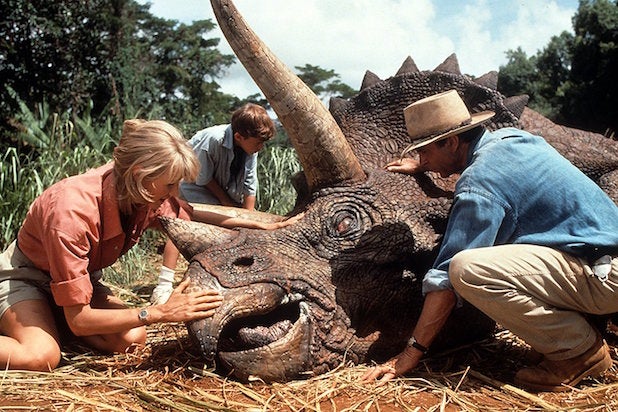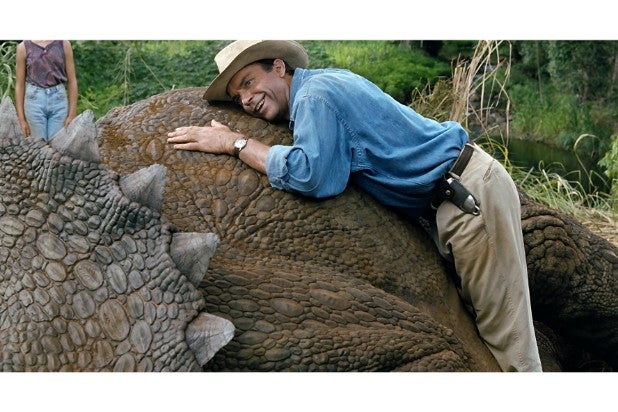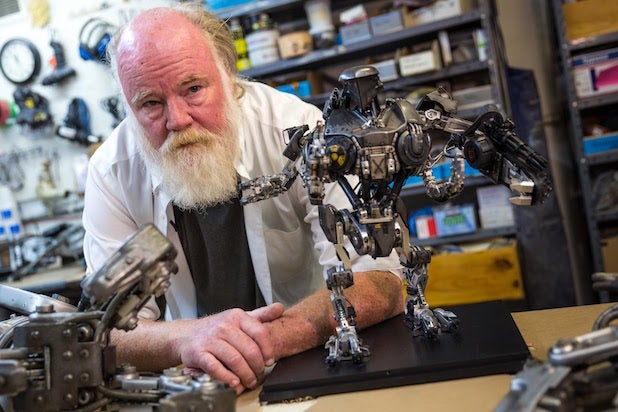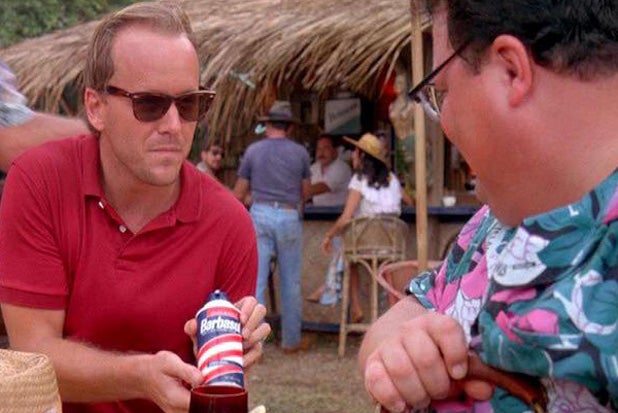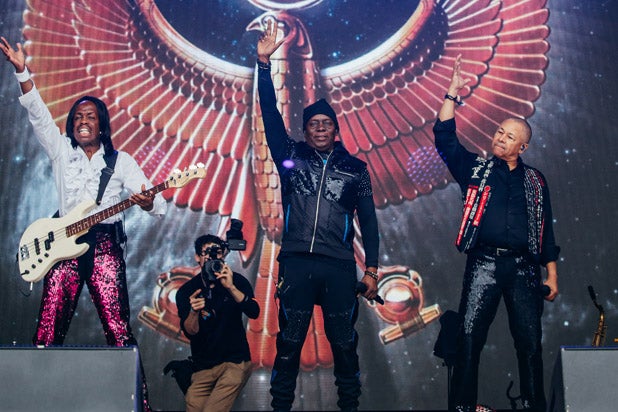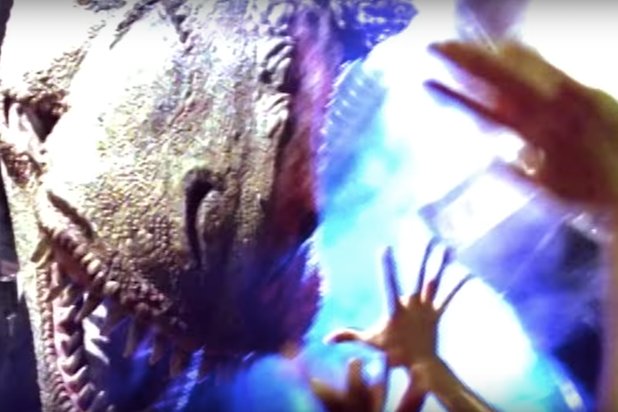TheWrap’s also got your first look here
Discovery Channel has set Oct. 13 as the global premiere date for Steven Spielberg’s and Alex Gibney’s docuseries, “Why We Hate,” TheWrap has learned exclusively. We’ve also got your first look at the six-part investigation into the motivation behind hatred.
“Why We Hate” hails from Spielberg’s Amblin Television and Gibney’s Jigsaw Productions in association with Escape Artists for Discovery Channel, and went into production earlier this year. Sam Pollard (“Sammy Davis Jr.: I’ve Gotta Be Me”) and Geeta Gandbhir (“Love the Sinner”) co-direct the multi-part documentary.
The Discovery Go platform gets “Why We Hate” one week ahead of cable TV, boasting an Oct. 6 debut, we’re told. Linearly, the docuseries airs Sundays at 10 p.m.
Watch TheWrap’s exclusive sneak peek via the video above.
“Why We Hate” will draw on research in psychology, neuroscience, sociology, and history, to trace the evolutionary basis of hate and use stories from both the past and present to reveal the nature of this primal and universal emotion.
The television event aims to reveal contemporary links to ancient behavior and use science as a basis for explaining the nature of hatred and the human mind. At the heart of the show is this question: If we can figure out why we hate, where hate originates, and how it is amplified, can we find a way to prevent it?
“The issues explored in ‘Why We Hate’ are more relevant than ever,” said Nancy Daniels, Discovery’s chief brand officer. “Discovery is tremendously proud to delve into this critical subject with legendary filmmakers Alex Gibney and Steven Spielberg and the teams they have assembled. The hard science gives us the knowledge we need, the storytelling provides the hope.”
“Getting to the root of the human condition is something not only fascinating, but necessary in understanding who we are,” Spielberg and Gibney said in a joint statement. “This is not a series that just documents something that’s happening; it’s an inquiry – an attempt to understand why we hate, through the science, and through an understanding of our common humanity. Hate is in our DNA. If we understand why we act the way we do, we can change the way we act. That is what we are uniquely capable of as human beings.”
“Why We Hate” is executive produced by Spielberg, Gibney, Frank Marshall, Stacey Offman, Richard Perello, Darryl Frank, Justin Falvey, Yael Melamede, Erica Sashin and Steve Tisch. Nancy Daniels and Howard Swartz will executive produce for Discovery.
'Jurassic Park' Turns 25: 21 Things You Probably Didn't Know About the Dino Hit (Photos)
Action adventure film “Jurassic Park” helped define modern blockbuster filmmaking. The Steven Spielberg monster hit, which is celebrating its 25th anniversary, debuted in theaters on June 11, 1993 to audience raves. With so many famed actors and groundbreaking effects involved, the film’s behind-the-scenes secrets are plentiful. Here are 21 super-interesting facts about the pioneering movie.
Michael Crichton began working on the novel that became the basis for “Jurassic Park” in the 1980s, writing from the perspective of a young boy at a theme park who was present when dinosaurs escaped. He received negative feedback from early readers and reworked the novel into an adult story. The book was published in 1990 and immediately became a hot project to buy in Hollywood. Universal won the bidding war, in large part thanks to a long-standing friendship between Crichton and Steven Spielberg.
Getty Images
Joseph Mazzello originally auditioned for a role in Spielberg’s 1991 hit “Hook,” but at seven years old he was told he too young to be cast in the movie. Instead, he wound up in one of the biggest commercial successes of all time: “Steven came up to me after that and said, ‘Don’t worry, Joey, I’m going to get you in the movie this summer,’ and then he offered me ‘Jurassic Park,’” Mazzello told ABC in a recent interview. He played the role of Hammond’s grandson Tim in the film.
Universal Pictures
Although “Jurassic Park” runs for two hours and seven minutes, there are approximately only 15 minutes of dinosaur footage in the entire movie. This technique has been compared to the method used in Spielberg’s earlier blockbuster “Jaws,” where the creatures’ screen time is minimized to enhance their dramatic impact.
Universal Pictures
Spielberg directed “Jurassic Park” at the same time that he was in post-production for his Oscar-winning Holocaust period drama “Schindler’s List.” In a 1993 interview with Entertainment Weekly, he described the challenges of working simultaneously on these two very different films: “I’m sitting here working in a black-and-white medium on a Holocaust story about an unpraised hero, over my head in that kind of sorrow every day. Then I have to kind of shift gears and get on the action-adventure story fast track. That’s been hard on all of us – the same editors have cut both movies along with me – so together we’ve gone through a kind of cinematic and cultural whiplash.”
Getty Images
While Laura Dern was Spielberg’s first choice to play Dr. Sadler, future “House of Cards” star Robin Wright was also offered the role, according to author Duncan Shay, who wrote a book about the making of the film. Wright turned it down, clearing the way for Dern to give one of her most famous performances.
Universal Pictures
Less than a month into the filming of “Jurassic Park”, the cast and crew faced a real-life disaster when Hurricane Iniki hit the island of Kauai on Sept. 11, 1991. They huddled in a bathroom in the hotel, entertaining themselves with a “Victoria’s Secret” catalogue and Spielberg’s ghost stories. Once the storm passed, they were airlifted out of Hawaii and returned to Los Angeles to finish the shoot.
Universal Pictures
The use of computer-generated imagery (CGI) in “Jurassic Park” represented a groundbreaking technological achievement for the film industry. As Spielberg said in a 2013 interview with Entertainment Weekly, “It changed special effects forever, and for better or for worse, it really did introduce the digital era.” The film won three Oscars at the 1994 Academy Awards: Best Sound Editing, Best Sound Mixing and Best Visual Effects.
Universal Pictures
One of the most famous CGI dinosaurs in the film is a Brachiosaurus, who jumps on his hind legs to reach leaves on the top of a tree. Spielberg revealed in DVD commentary that the move was anatomically impossible for the real dinosaur to do, based on its bone structure found by real-life paleontologists. The CGI team shrank the digital creature’s hind legs to allow him to perform the bit of movie magic.
Universal Pictures
As the heroes watch the Brachiosaurus, Dr. Malcolm famously says, “He did it. The crazy son of a bitch did it.” According to Jeff Goldblum in Blu-Ray commentary, he filmed the line in just one take.
Universal Pictures
Goldblum also says he came up with the idea for Malcolm to save the kids by distracting the T-Rex with a flare and letting it chase him. The script originally had Malcolm running away scared, but Goldblum convinced Spielberg that the flare would be more heroic and exciting to watch.
Universal Pictures
Obviously, since dinosaurs came before humans, the “JP” team needed to invent what they thought they sounded like. In an interview with Vulture, Oscar-winning sound designer Gary Rydstrom said he used a mix of different animal sounds for each species, including a slowed-down recording of a baby elephant for the T-Rex.
Universal Pictures
The CGI team also took artistic liberties with the T-Rex’s movements. According to Tom Shone’s book “Blockbuster,” the paleontologists Spielberg brought as advisers couldn’t agree on how the carnivore would move. Ultimately, science was thrown out the window, as the T-Rex moves faster in the film than its skeleton would have actually allowed.
Universal Pictures
The first dinosaur scene depicts a sick Triceratops. According to Duncan Shay’s book about the making of the film, Stan Winston and his team had to rush to complete the Triceratops puppet after Spielberg put it at the top of the production schedule.
Universal Pictures
Winston’s Triceratops puppet took eight people to operate. One person operated the eyes by remote control while the others sat in a pit underneath the dinosaur. Each of the limbs were operated by a different puppeteer, with others operating the mouth, tongue and breathing mechanism.
Universal Pictures
Spielberg’s team included Phil Tippett, a sound effects legend who worked on stop-motion animation for “RoboCop” and the “Star Wars” trilogy. When he learned that many of the dinosaurs would be computer animated, Tippett said he thought his job had “become extinct.” Instead, he helped make both the animatronic and CGI dinosaurs’ movements feel more lifelike, earning the second Oscar of his career for his work.
YouTube/Tested
Well after the film came out, Tippett’s work also made him an internet meme, thanks to the role he was given in the credits: “Dinosaur Supervisor.” Movie fans jokingly blamed Tippett for not supervising the dinosaurs and letting them devour people. When asked about the meme by Mashable, Tippett called it “beyond silly” and “a waste of time.”
Know Your Meme
One of the most famous product tie-ins on film happens when a corporate rival hatches a plan to steal dinosaur embryos in a can of Barbasol shaving cream. The script didn’t specify the brand, but art director John Bell said in an interview for the film’s 20th anniversary Blu-Ray release that the can’s label design stood out from all the others.
Universal Pictures
Ever since then, Barbasol has been using “Jurassic Park” and its sequels to advertise their products. he company announced a tie-in deal in 2015 for the release of “Jurassic World,” even though the can didn’t return in the sequel itself.
The famous foreboding shots of water rippling from the T-Rex’s massive footsteps were inspired by, of all things, the bandEarth Wind & Fire. According to Empire Magazine, Spielberg was listening to the famous R&B group in his car and noticed how the bass from the music created ripples in his coffee, and got the idea to use liquid as a warning of an approaching beast.
Universal Pictures
“Jurassic Park” launched an entire franchise at Universal, including a popular ride at Universal Studios. Development on the ride actually began before the movie even started filming, and was based on a combination of Michael Crichton’s novel and suggestions from Spielberg, who oversaw creative development of the ride.
Universal Studios
While “Jurassic Park” mania swept the world, famed critics Gene Siskel and Roger Ebert weren’t on board. They gave the film two tentative thumbs up, but also called it a “missed opportunity,” saying it didn’t hold up to Spielberg’s past films, including “Jaws” and “Close Encounters of the Third Kind.”
RogerEbert.com
Steven Spielberg’s sci-fi blockbuster celebrates silver anniversary
Action adventure film “Jurassic Park” helped define modern blockbuster filmmaking. The Steven Spielberg monster hit, which is celebrating its 25th anniversary, debuted in theaters on June 11, 1993 to audience raves. With so many famed actors and groundbreaking effects involved, the film’s behind-the-scenes secrets are plentiful. Here are 21 super-interesting facts about the pioneering movie.
Source: Read Full Article
